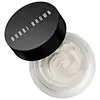What's inside
What's inside
 Key Ingredients
Key Ingredients

 Benefits
Benefits

 Concerns
Concerns

 Ingredients Side-by-side
Ingredients Side-by-side

Water
Skin ConditioningPetrolatum
EmollientDimethicone
EmollientButyrospermum Parkii Butter
Skin ConditioningGlycerin
HumectantButylene Glycol
HumectantCeresin
Emulsion StabilisingPhenyl Trimethicone
Skin ConditioningLauryl PEG-9 Polydimethylsiloxyethyl Dimethicone
Skin ConditioningLanolin Alcohol
EmollientSorbitol
HumectantSodium Hyaluronate
HumectantScutellaria Baicalensis Root Extract
AstringentMorus Bombycis Root Extract
Skin ConditioningAscophyllum Nodosum Extract
Skin ConditioningAsparagopsis Armata Extract
Skin ProtectingCamellia Sinensis Leaf Extract
AntimicrobialOlea Europaea Fruit Extract
BleachingSalvia Sclarea Extract
AntiseborrhoeicPyrus Malus Fruit Extract
Skin ConditioningAcetyl Hexapeptide-8
HumectantLimnanthes Alba Seed Oil
Skin ConditioningOenothera Biennis Oil
EmollientTocopheryl Acetate
AntioxidantAcetyl Glucosamine
Skin ConditioningLinoleic Acid
CleansingCaffeine
Skin ConditioningMicrococcus Lysate
Skin ConditioningDi-C12-15 Alkyl Fumarate
EmollientVitis Vinifera Seed Oil
EmollientTriticum Vulgare Bran Extract
Skin ConditioningTrehalose
HumectantCholesterol
EmollientPinanediol
Skin ConditioningCamphanediol
Skin ConditioningSucrose
HumectantStearic Acid
CleansingPalmitic Acid
EmollientLecithin
EmollientPotassium Hydroxide
BufferingSilica
AbrasivePentylene Glycol
Skin ConditioningPEG-30 Dipolyhydroxystearate
EmulsifyingSodium Chloride
MaskingHydroxystearic Acid
CleansingPEG-8 Distearate
EmulsifyingBehenyl Alcohol
EmollientParfum
MaskingBenzyl Salicylate
PerfumingSodium Sulfite
PreservativeSodium Metabisulfite
AntioxidantDisodium EDTA
Tetrasodium EDTA
Chlorphenesin
AntimicrobialPotassium Sorbate
PreservativePhenoxyethanol
PreservativeWater, Petrolatum, Dimethicone, Butyrospermum Parkii Butter, Glycerin, Butylene Glycol, Ceresin, Phenyl Trimethicone, Lauryl PEG-9 Polydimethylsiloxyethyl Dimethicone, Lanolin Alcohol, Sorbitol, Sodium Hyaluronate, Scutellaria Baicalensis Root Extract, Morus Bombycis Root Extract, Ascophyllum Nodosum Extract, Asparagopsis Armata Extract, Camellia Sinensis Leaf Extract, Olea Europaea Fruit Extract, Salvia Sclarea Extract, Pyrus Malus Fruit Extract, Acetyl Hexapeptide-8, Limnanthes Alba Seed Oil, Oenothera Biennis Oil, Tocopheryl Acetate, Acetyl Glucosamine, Linoleic Acid, Caffeine, Micrococcus Lysate, Di-C12-15 Alkyl Fumarate, Vitis Vinifera Seed Oil, Triticum Vulgare Bran Extract, Trehalose, Cholesterol, Pinanediol, Camphanediol, Sucrose, Stearic Acid, Palmitic Acid, Lecithin, Potassium Hydroxide, Silica, Pentylene Glycol, PEG-30 Dipolyhydroxystearate, Sodium Chloride, Hydroxystearic Acid, PEG-8 Distearate, Behenyl Alcohol, Parfum, Benzyl Salicylate, Sodium Sulfite, Sodium Metabisulfite, Disodium EDTA, Tetrasodium EDTA, Chlorphenesin, Potassium Sorbate, Phenoxyethanol
Water
Skin ConditioningHelianthus Annuus Seed Oil
EmollientSimmondsia Chinensis Seed Oil
EmollientPrunus Armeniaca Kernel Oil
MaskingSqualane
EmollientAlcohol Denat.
AntimicrobialCetearyl Alcohol
EmollientGlyceryl Stearate
EmollientStearyl Alcohol
EmollientCetearyl Glucoside
EmulsifyingOenothera Biennis Oil
EmollientButyrospermum Parkii Butter
Skin ConditioningPhenoxyethanol
PreservativeLithium Magnesium Sodium Silicate
AbsorbentChlorphenesin
AntimicrobialXanthan Gum
EmulsifyingRuscus Aculeatus Root Extract
AstringentAloe Barbadensis Leaf Juice Powder
Skin ConditioningTocopherol
AntioxidantLavandula Angustifolia Oil
MaskingAdenosine
Skin ConditioningLinalool
PerfumingRosmarinus Officinalis Leaf Oil
MaskingPelargonium Graveolens Flower Oil
MaskingGlycine Soja Oil
EmollientCitronellol
PerfumingGeraniol
PerfumingLavandula Hybrida Oil
EmollientCucumis Sativus Fruit Extract
EmollientLimonene
PerfumingCitral
PerfumingCurcuma Longa Root Extract
MaskingSclareolide
MaskingRose Flower Oil
MaskingJasminum Officinale Extract
MaskingCitric Acid
BufferingWater, Helianthus Annuus Seed Oil, Simmondsia Chinensis Seed Oil, Prunus Armeniaca Kernel Oil, Squalane, Alcohol Denat., Cetearyl Alcohol, Glyceryl Stearate, Stearyl Alcohol, Cetearyl Glucoside, Oenothera Biennis Oil, Butyrospermum Parkii Butter, Phenoxyethanol, Lithium Magnesium Sodium Silicate, Chlorphenesin, Xanthan Gum, Ruscus Aculeatus Root Extract, Aloe Barbadensis Leaf Juice Powder, Tocopherol, Lavandula Angustifolia Oil, Adenosine, Linalool, Rosmarinus Officinalis Leaf Oil, Pelargonium Graveolens Flower Oil, Glycine Soja Oil, Citronellol, Geraniol, Lavandula Hybrida Oil, Cucumis Sativus Fruit Extract, Limonene, Citral, Curcuma Longa Root Extract, Sclareolide, Rose Flower Oil, Jasminum Officinale Extract, Citric Acid
Ingredients Explained
These ingredients are found in both products.
Ingredients higher up in an ingredient list are typically present in a larger amount.
This ingredient is also known as shea butter. It is an effective skin hydrator and emollient.
Emollients help soothe and soften your skin. It does this by creating a protective film on your skin. This barrier helps trap moisture and keeps your skin hydrated. Emollients may be effective at treating dry or itchy skin.
Shea butter is rich in antioxidants. Antioxidants help fight free-radicals, or molecules that may harm the body. It is also full of fatty acids including stearic acid and linoleic acid. These acids help replenish the skin and keep skin moisturized.
While Shea Butter has an SPF rating of about 3-4, it is not a sunscreen replacement.
Shea butter may not be fungal acne safe. We recommend speaking with a professional if you have any concerns.
Learn more about Butyrospermum Parkii ButterChlorphenesin is a synthetic preservative. It helps protect a product against bacteria in order to extend shelf life. In most cases, Chlorphenesin is paired with other preservatives such as phenoxyethanol and caprylyl glycol.
Chlorphenesin is a biocide. This means it is able to help fight the microorganisms on our skin. It is also able to fight odor-releasing bacteria.
Chlorphenesin is soluble in both water and glycerin.
Studies show Chlorphenesin is easily absorbed by our skin. You should speak with a skincare professional if you have concerns about using Chlorphenesin.
Learn more about ChlorphenesinOenothera Biennis Oil is the fixed oil derived from the seeds of the Evening Primrose.
Evening primrose oil is rich in fatty acids. These fatty acids include linoleic (60-85%), oleic (5-12%), palmitic (4-10%), and stearic (2-4%).
The fatty acid composition makes it a great ingredient for soothing and moisturizing skin. However, it may not be Malassezia folliculitis, or fungal acne safe.
Further research is needed on the role of evening primrose in treating eczema.
Evening primrose is native to North America.
Learn more about Oenothera Biennis OilPhenoxyethanol is a preservative that has germicide, antimicrobial, and aromatic properties. Studies show that phenoxyethanol can prevent microbial growth. By itself, it has a scent that is similar to that of a rose.
It's often used in formulations along with Caprylyl Glycol to preserve the shelf life of products.
Water. It's the most common cosmetic ingredient of all. You'll usually see it at the top of ingredient lists, meaning that it makes up the largest part of the product.
So why is it so popular? Water most often acts as a solvent - this means that it helps dissolve other ingredients into the formulation.
You'll also recognize water as that liquid we all need to stay alive. If you see this, drink a glass of water. Stay hydrated!
Learn more about Water